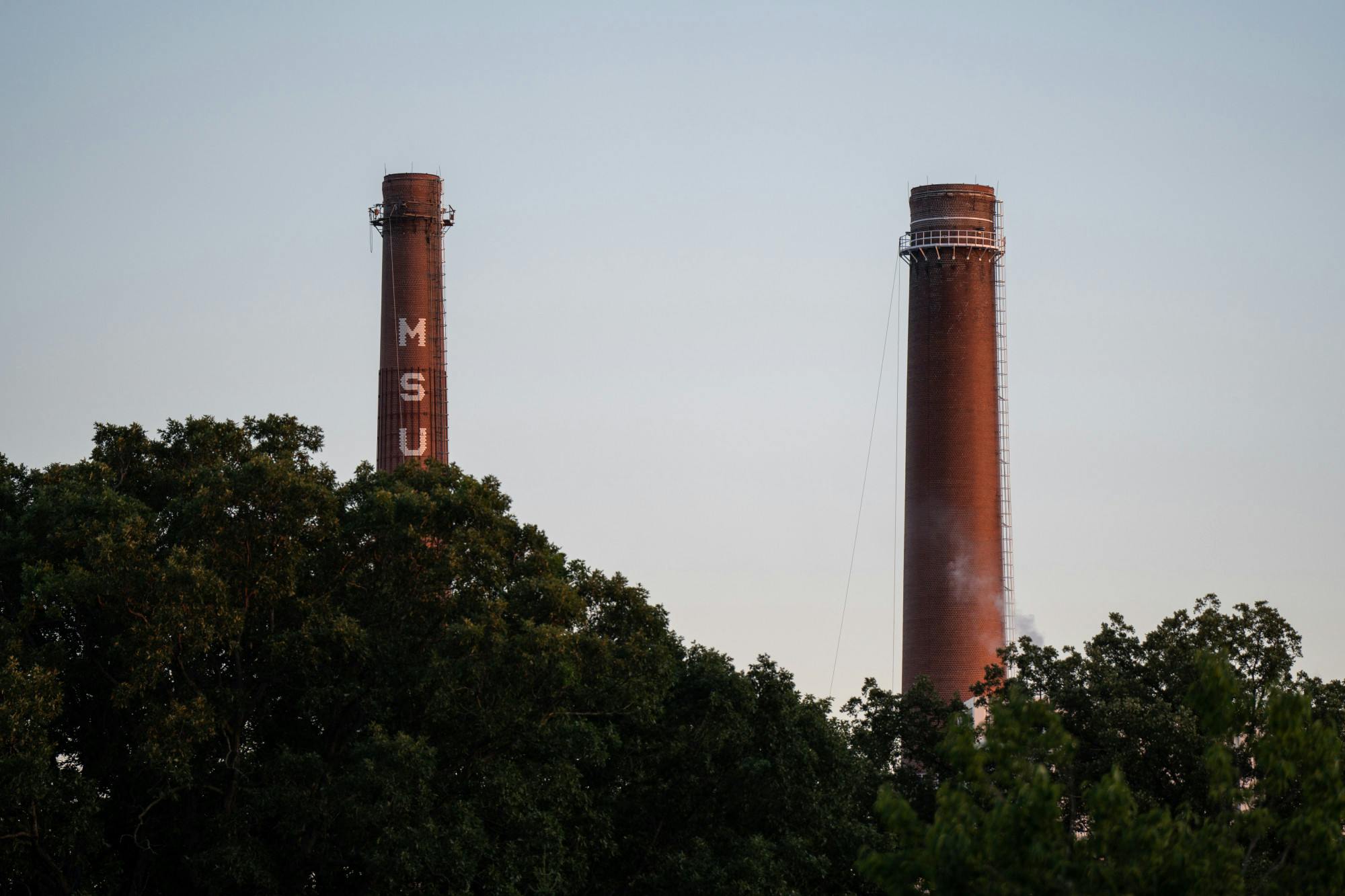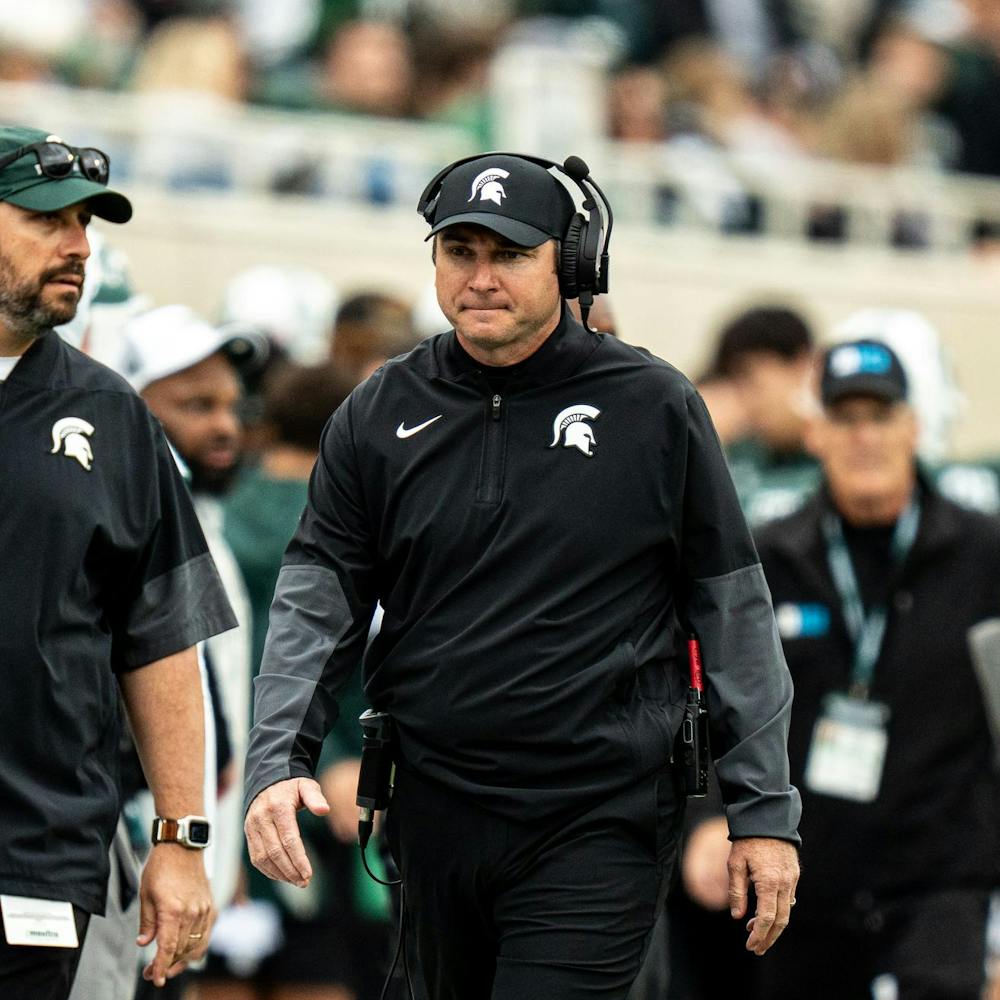Following a 15-month vacancy, Michigan State University appointed a new Director of Campus Sustainability on April 5.
The choice? Harvey “Chip” Amoe III, who most recently served as Head of Sustainability at Henry Ford Health System following almost two decades as a medical industry lobbyist.
Amoe began his role on April 10. He’s stepping in following a period of shifting, and in some ways, declining, action on sustainability at MSU. He’s also joining the university at an opportune moment for a “government relations” professional, with new federal legislation funding and subsidizing billions of dollars in conservation and clean energy generation projects.
“I think we can really focus on (those opportunities),” Amoe said. “We have great members of Congress and senators here that will be able to help. The state has gotten a lot of money and it needs to be allocated.”
MSU's Office of Government Relations handles state appropriations and oversees some grant applications. Amoe said he “knows they’re a great team” and looks forward to working closely with them.
The pre-Amoe era of sustainability at MSU began in 2010, when a group of faculty, administrators and students came together to create the Energy Transition Plan, or ETP — a broad document which laid out yearly goals and prospective projects for the use of renewable energy and greenhouse gas emissions. In 2012, MSU’s board approved the ETP, cementing it as the official sustainability plan.
Coal transition
The largest early accomplishment of the ETP and its stewards remains the end of coal power at MSU.
In 2016, the Simon Power Plant — the primary source of campus energy — transitioned from coal to natural gas. That action required a relatively small investment of $3 million, and amounted to a 43% reduction of overall CO2 emissions from campus, according to university documents.
Solar power
While coal made strides in reducing emissions, investments in solar power that followed began introducing renewable energy to the campus grid. In 2017, MSU installed its first solar carports, which were placed above commuter parking lots surrounding campus.
In the first year, the arrays would help MSU reach 12.3% renewable energy, just shy of the ETP’s yearly goal, according to university documents.
Solar can be applicable to the MSU grid, as the summer months when solar is most effective are when MSU demands the most power. Infrastructure, Planning and Facilities spokesperson Fred Woodhams said the solar array can produce up to 25% of the campus' energy on “clear July days.”
But since the first arrays were built, the percentage of renewable energy running through the MSU grid has declined.
After the construction of multiple large buildings that require a lot of energy, without equally expanding renewable energy generation, all renewables make up just 5% of the campus energy today, Woodhams said.
There was a major solar expansion planned, but it was never completed.
The university had a signed contract with a vendor to build a 110-acre solar farm in south campus with construction set to begin in 2021, according to MSU spokesperson Emily Guerrant. However, the contractor evoked an emergency clause during the pandemic to raise the price, which led MSU to back out of the deal.
Guerrant said in an email that MSU is currently “exploring other options to bring the university closer to its” sustainability goals.
Former MSU administrator Wolfgang Bauer initially negotiated the deal and said he questions the cancellation. He said he ran into executives from the contractor after the pandemic and was told the new price. He said that price was still lower than the estimated savings from the array.
“So we’re not making as much money as we previously thought,” Bauer said. “It’s still good for the environment and it’s still good for our pocketbooks, so I was puzzled. Why was it not done?”
Guerrant could not confirm that the new price was less than the projected savings.
Anaerobic digester
Another early advancement in clean energy was the anaerobic digester, a device which converts the gas emissions made by decomposing food waste and animal excretion into usable energy.
While its overall generation is much lower than the solar carports or T.B. Simon Power Plant, it outperformed estimates and is set to pay back its $5 million initial investment ahead of the projected schedule, according to university documents.
Other potential options
During the ETP’s reign, MSU also commissioned studies of the viability of potential wind and geothermal power systems.
The 2011 wind power study found that wind-speed in the farm areas south of MSU’s campus could support turbines, but that other options like solar “may be a better option,” according to a presentation of the findings.
Bauer added that administrators were also concerned with the aesthetics of wind turbines. Specifically, Bauer said, former MSU president Lou Anna K. Simon would often say: “as long as I’m president there will not be wind turbines on this campus.”
In 2019, the administration commissioned a study of potential geothermal energy — whereby tunnels dug deep into the earth use the planet’s warmth to heat water for energy use above-ground — which concluded that the high upfront cost and “technical risks” associated with the proposed system would outweigh the potential savings.
Geothermal projects have been made feasible on college campuses, though the most successful example employed significant state funding. From 2009 to 2014, Ball State University worked to complete an $83 million conversion to geothermal heating. In the end, the State of Indiana and federal government covered $78 million of the cost, and the system brought Ball State into carbon neutrality, according to an Indiana University study of the project.
Bauer said government funding for geothermal wasn’t seriously pursued during his time in administration, but that it could be more plausible today with the federal funds Amoe voiced interest in.
The ETP’s end
The ETP didn’t just prescribe goals; it also outlined a process for its own review and upkeep. It asked that a committee of faculty and students reassemble and create a report summarizing the progress made and opportunities for improvement every five years.
The first of those reviews occurred in 2017. It found that while MSU had slightly fallen short of the goals, major progress had been made — namely the coal transition. By the end of 2022, there was no five-year check-up, because the plan itself and the process for review had been scrapped.
The ETP’s mission has been rolled into MSU’s “strategic plan,” which does not include a similar review process, MSU deputy spokesperson Dan Olsen said.
While the board was responsible for the passage of the ETP, it never voted on ending it. In December 2022, then-board chair Diane Byrum said she wasn’t sure exactly who made the decision to end the ETP.
Bauer questions the choice and specifically the way the restructuring leaves out the “crucial” process of upkeep. He saw the reviews as a way to “keep (the administration’s) feet to the fire” in terms of sustainability.
The ETP’s end coincides with Samuel L. Stanley Jr.’s appointment to MSU president in 2019. Bauer saw Stanley’s start as a turning point in MSU’s commitment to sustainability. Shortly after he started, Stanley restructured the administration and eliminated Bauer’s vice president position, sending him back to the faculty.
Bauer believes a lack of commitment to environmental issues continues to this day.
“I really regret that there hasn’t been a champion for increasing renewable energy on campus or in central administration,” Bauer said.
On whether a new sustainability director could solve the problem, Bauer said that the role would be a “fool's errand” without the support of the administration.
But Amoe says he’s ready and prepared for pushback. He believes his experience lobbying for causes externally will help him fight for sustainability internally, despite potential opposition.







